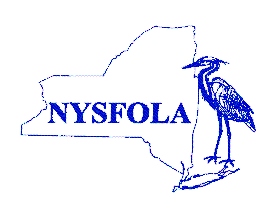



|

| Category: Lake Management |
 Green Lawns, Blue Waters Green Lawns, Blue Waters  |
Last Update: 2005/5/27 22:17 |
Description:
 Ten of the 19 New York City watershed reservoirs are currently classified as impaired. This means they are not meeting their designated uses due to excess pollutants. In 9 of these 10 reservoirs, all in the Croton District, excess phosphorus is the main culprit in the declining water quality.* As part of our stormwater pollution prevention education efforts, the New York Public Interest Research Group (NYPIRG) Fund has embarked on a campaign to clean up our waters. NYPIRG recently teamed up with our friends in the watershed, League of Women Voters of Westchester, to produce and distribute two guides: Green Lawns, Blue Waters-Consumer Guide to Safe and Healthy Waters and Pesticide-Free Gardening.
|
| Hits: 325 Rating0.00 (0 votes) |
| Category: Lake Management |
 LakeStewardship.org Website LakeStewardship.org Website  |
Last Update: 2006/3/3 2:11 |
Description:
- promoting lake and environmental stewardship
- providing resources for lake residents, lake associations,
and cottage owner
|
| Hits: 274 Rating0.00 (0 votes) |
| Category: Lake Management |
 Lewisboro Stormwater Management Draft Plan Lewisboro Stormwater Management Draft Plan  |
Last Update: 2005/4/7 13:05 |
Description:
From the Web Page: DRAFT ANNUAL STORMWATER MANAGEMENT REPORT Town of Lewisboro SPDES # NYR20A227 June 1, 2004 Executive Summary: Phosphorous is the biggest stormwater pollutant in Lewisboro. Failing septics and overuse of lawn fertilizer are the main sources of this phosphorous pollution. Phosphorous has led to the eutrophication of the Croton, Titicus and Muscoot Reservoirs, as well as our own Lakes Truesdale, Waccabuc, Rippowam and Oscaleta. Septic system failure can be prevented with routine maintenance. This is critical in Lewisboro because most of our homes rely on septic systems. Over-use of lawn fertilizers can be reduced through education of our residents. Wetland buffers can help reduce phosphorous pollution by allowing nature to filter out phosphorous and other pollutants. Regular cleaning of catch basins allows the basins to trap the roadside run-off that carries phosphorous, nitrates, and sedimentation. These simple, inexpensive measures are the basis of our stormwater management program. If implemented, they will result in cleaner water for our residents. The highlight of our year ending March 9, 2004 was the passing of the 150-foot wetland buffer ordinance. This will ensure that our wetlands and buffers will be protected, allowing them to continue to filter water pollutants. 111 acres of watershed land in the center of Lewisboro, including two streams and wetlands, were also preserved this past year. Water quality studies of two lakes were also completed. All our storm drains were mapped, and all basins in the lake communities were cleaned. (continues on http://www.lewisborogov.com/committees/Stormwater-Mgt%20Report.html site...)
|
| Hits: 315 Rating0.00 (0 votes) |
| Category: Lake Management |
 New York State Federation of Lake Associations New York State Federation of Lake Associations  |
Last Update: 2005/5/27 22:27 |
Description:
 Truesdale Lake participates in the Citizens Lake Assessment Program along with another 200 or so lakes in New York State. From their website: Quote: The Citizens Statewide Lake Assessment Program (CSLAP), is a cooperative effort between the NYSDEC and the not-for-profit New York State Federation of Lake Associations, Inc. (NYSFOLA) for volunteer lake monitoring. CSLAP is a scientific and educational program in which citizen volunteers from member NYSFOLA lake associations collect water quality information on lakes. The water chemistry samples, watershed data andhistorical information collected by the CSLAP volunteers are used to build long term data bases, educate lakefront property owners, lake users, and concerned citizens, and to develop management strategies specific to each CSLAP lake.
|
| Hits: 382 Rating0.00 (0 votes) |
|
|



|